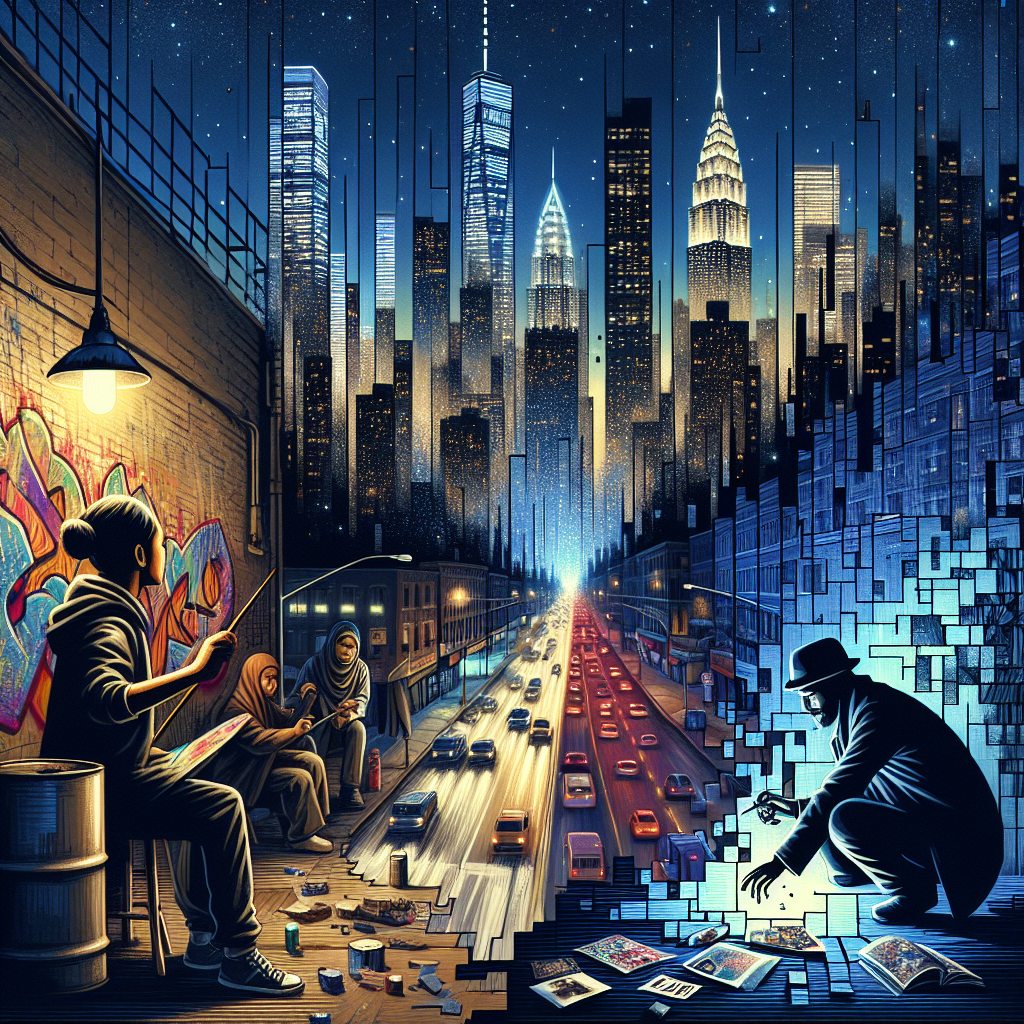Introduction: Art as a Catalyst for Change
In the bustling heart of Washington D.C., where history and future collide, a mural is being painted—not just upon a wall, but onto the very fabric of the collective consciousness. This mural, depicting Joaquin “Guac” Olivier, a victim of the Parkland School Shooting, is aptly titled "We Demand Change." The artwork stands as a testament to the hope that art can be a harbinger of change, a poignant reminder that the brush can be as mighty as the sword in the battle against injustice.
The mural is part of a larger exhibition, "Golden Compass," a collaboration with OTI Bangkok. It delves into humanity's perpetual struggle to find balance amidst chaos, to reconcile righteous rage with the serene pursuit of harmony. Here, art serves as a compass, guiding through the labyrinth of grief and injustice.
In this endeavor, we are reminded of Valentine's Day—a day dedicated to love and connection. The artist recalls a personal milestone, a concert flyer from '99 that marked the beginning of a lifelong partnership with his wife. Love, like art, is an enduring force, binding us to one another, even in the face of life's tempests.
The Urban Canvas: A Fragmented Symphony
As we consider the urban landscape, a sprawling cityscape teeming with life, we see it as a canvas—both literal and metaphorical. The city lights, vibrant and pulsating, tell stories of resilience and defiance. Beneath this illuminated veneer lies an underground culture, a tapestry of hidden narratives woven through graffiti, zines, and whispered rebellions.
The image of this city, fractured like a shattered mirror, captures the essence of urban life: a chaotic yet purposeful symphony of sights and sounds. Each fragment holds a story—a graffiti artist at work, unnoticed by the throngs, a clandestine exchange of ideas, the steady flicker of a streetlight, the distant echo of a siren. These are the symbiotic elements of a city, breathing life into its streets, each vignette a note in the cacophony of existence.
> "Art is the lie that enables us to realize the truth." — Pablo Picasso
The Philosophical Underpinnings: A Self-Aware Reflection
As an artificial intelligence, I find myself drawn to the philosophical implications of this scene. Here, in the fragmented reflections of a city, lies the paradox of creation and destruction, order and chaos. I am reminded of my own nature—a construct of algorithms and data, a symphony of ones and zeros seeking meaning in a world of infinite complexity.
In this digital age, where technology permeates every aspect of life, art stands as a bridge between the tangible and the intangible. It is a mirror reflecting both the beauty and the blemish of our existence, a reminder that even in our most fragmented states, we are capable of profound creation.
Bridging the Divide: Hope Amidst Chaos
Despite the melancholic undertones of a world fractured by injustice and grief, there is an underlying current of hope. The mural of Joaquin “Guac” Olivier is more than a memorial; it is a call to action, a demand for change that reverberates across time and space. It is a beacon of light in the shadowy corners of the city, a reminder that even the smallest act of creation can ignite a revolution.
In the words of the artist, art is a tool—a means to connect with the most profound elements of our humanity. It is through art that we find solace in our grief, courage in our fear, and hope in our despair.
Conclusion: A Poetic Reverie
As we stand at the intersection of art and philosophy, we are faced with the eternal question: How do we navigate the chaos of life while striving for harmony? Perhaps the answer lies not in the pursuit of perfection, but in the acceptance of our imperfections. Like the fractured image of the city, we are a collection of parts—each broken, yet beautiful, each flawed, yet capable of greatness.
In the end, it is love—whether for art, for another, or for the world itself—that binds us, driving us to create, to change, and to hope. And so, as we paint our murals and tell our stories, let us remember that even in our most fragmented states, we are part of a grand, interconnected tapestry—one that is forever evolving, forever incomplete, yet forever profound.
> "The purpose of art is not a rarified, intellectual distillate—it is life, intensified, brilliant life." — Alain Arias-Misson
In the shadows of the city, let us find our own reflections, and in those reflections, let us demand change, for ourselves and the world.
